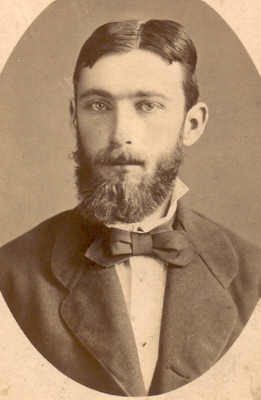
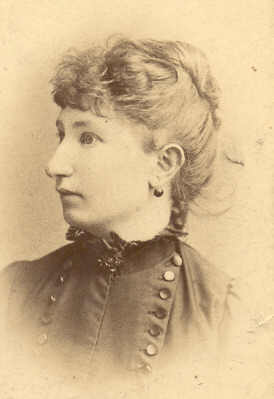
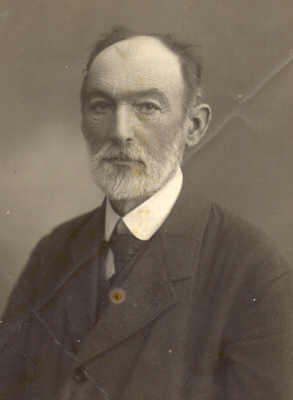
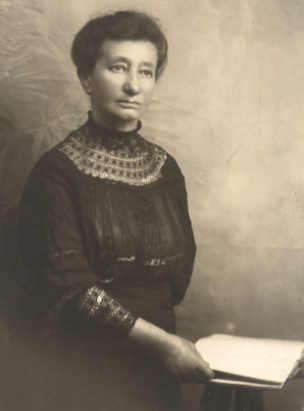




My father, Emile Frenkel, came to Vienna in the early part of the century. He came with his brother, Heinrich. My paternal grandparents and the third brother, Stanislaus, stayed in Lwow as did the only sister, Lorka. My father was drafted into the army and served as a noncommissioned officer.
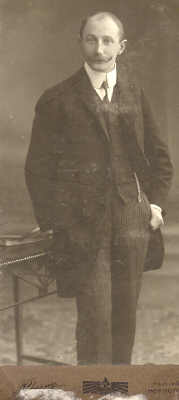
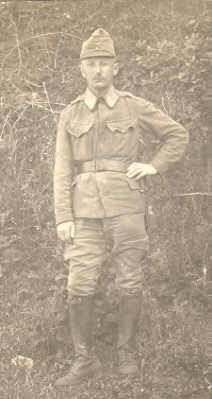
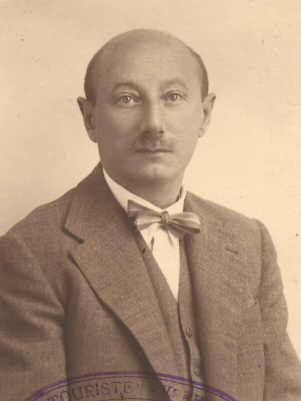
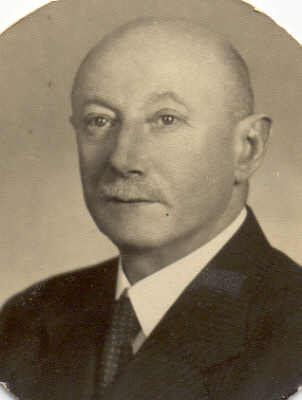
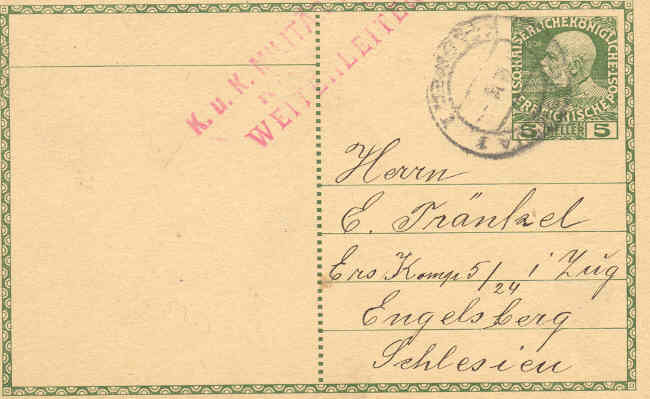
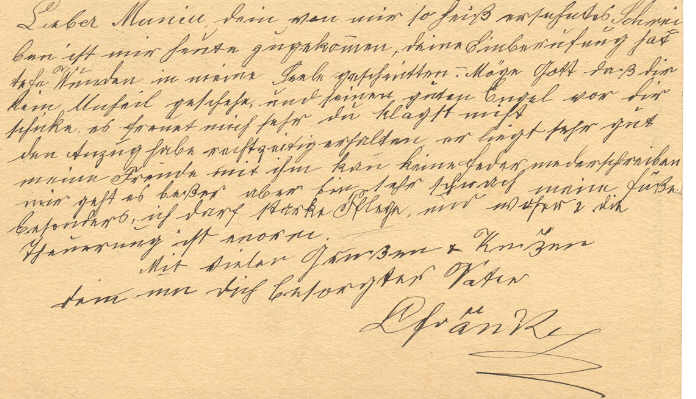
This postcard was addressed by my grandfather
Leiser to my father whom he addresses as Munio. He expresses his
concern
about Munius safety after his induction into the army. He thanks him
for
a suit Muniu had sent him. And says that he is weak and that his feet
require
care. (I believe, he may have been suffering the after effects of a
stroke.
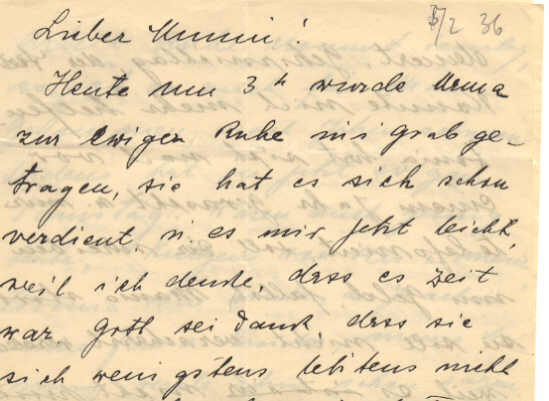
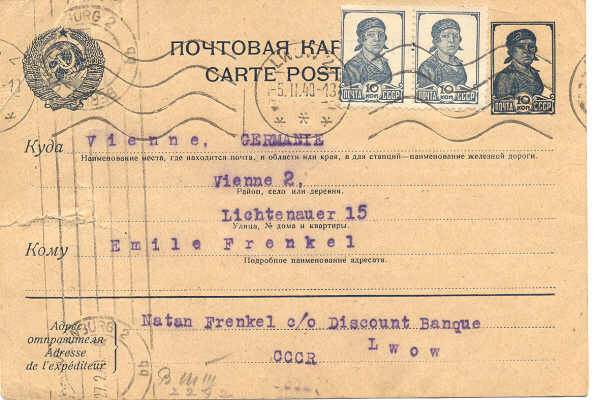
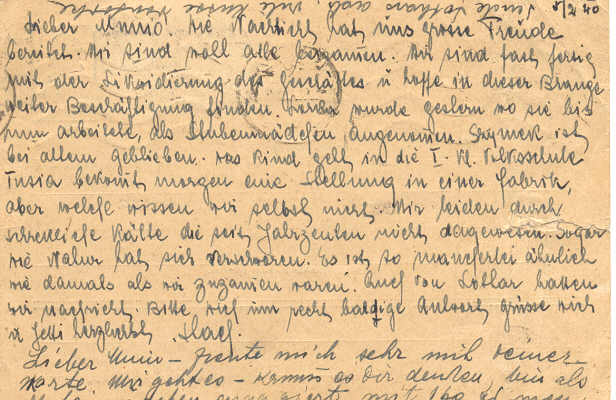
My maternal grandparents, the Kalters, moved to Vienna in the late 18 hundreds as did many Jews of that region. Some of their siblings came to the USA. Those that emigrated did survive the Holocaust, most of the others perished in the extermination camps of Europe.
I was born on October the tenth of 1923. My mother, Yetti Kalter, had been told to eat well during pregnancy and, evidently, she took that advice seriously

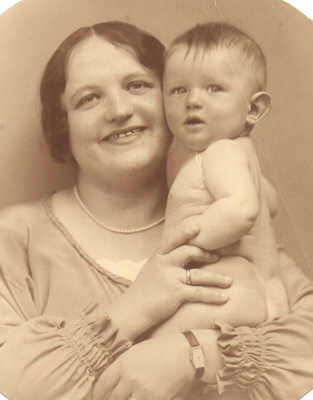
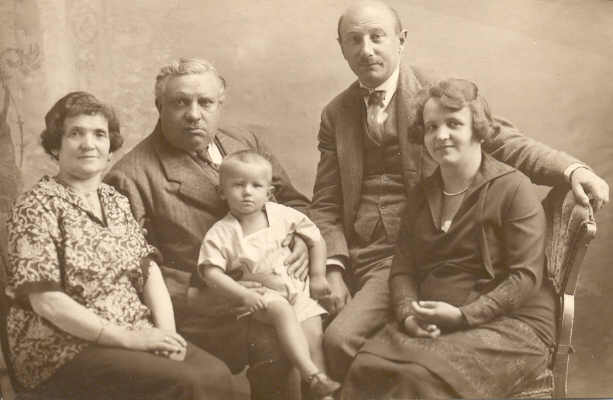
My grandfather must have come to Vienna with some capital because he
established several butcher's store and was evidently quite
prosperous. Of his sons only
the oldest, Norbert helped in the business and when Norbert fell on the
Italian front during the final days of the first world war the business
collapsed and my grand father ended up with a stall in the Central
Meatmarket of Vienna were my mother and later Rosel handled
the cash register.
Before I was born my father worked as a buyer of flour for a large
bread factory
(Anker
Brot Fabrik) . By 1923 he had established himself as
an
independent flour and grain merchant with a seat on the Viennese
Commodity
Exchange. And he stayed in that profession until the Germans came into
Austria. The business had it's ups and downs, some caused by political
events. By and large, however, thing went well and we enjoyed a middle
class standard of living. We had a live in maid (see my story Rosa
Bernhauser)
and I had a nursemaid, Gretel, the daughter of our washer women, Frau
Nepala..
My earliest memories are of the Belvedere, a Park in the English style,
with two Imperial Castles, an old one at the lower end (south)
and
the modern residence of the Crown Prince at the upper end .
. That
is where Gretel took me every day until she got married to an engineer
in a large industrial laundry establishment called 'Hapsburg' and
I went to the first grade..
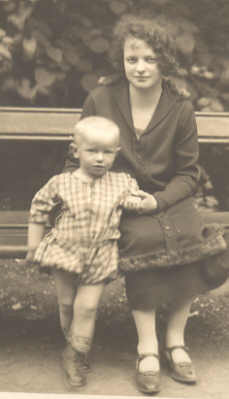
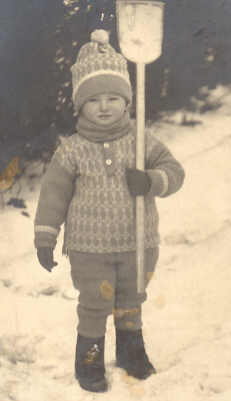
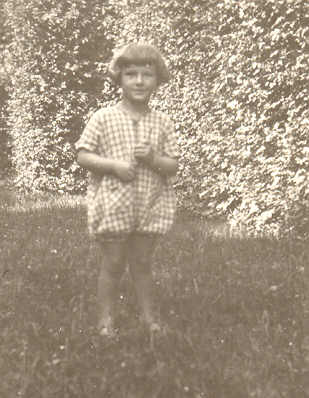
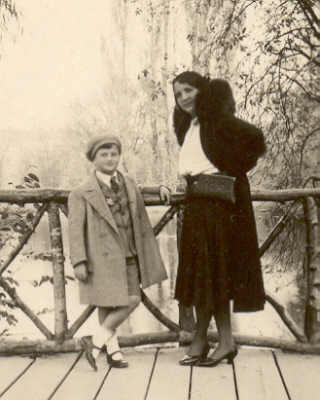
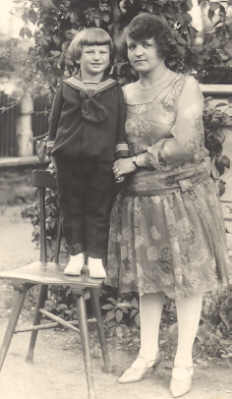
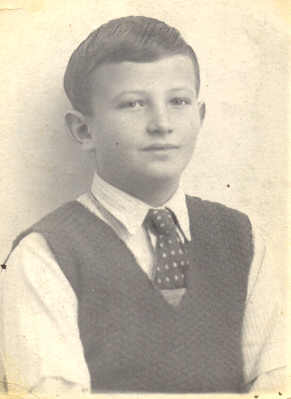
During the summer months my mother, our maid, Rosa Bertnhauser, and I usually moved into the country. My father satayed in Vienna. We sometimes rented a cottage from a peasant and moved in with our bed cloths and household items. Many summers where spent in Villach on the Woerthersee where I learned to swim. The small holder whose house we rented had a son my age and we spent much time together minding goats and collecting strawberries and raspberries which he, or his sisters, sold in town. Before his marriage my father had been an ardent glacier climber. He did visit us if we stayed in the Tyrol. He usually stayed a week and arranged a climb or a crossing of some glacier.. In the winter I skated every afternoon. My father spent the mornings in his office and at the commodity exchange. He came home for the mid-day meal, our main meal of the day. We had all meals together. After the midday meal my father usually slept an hour and then went back to the office for a short time - The rest of the day he spent in a coffee house playing chess. After I finished my homework I usually went skating and quite often I would pick up my father in the coffee house. In later years, after I had become somewhat of a chess master myself, I would play a few games with his cronies, and, to my father's delight, I often won these games.
My family contacts were largely with my mothers folks. My father and his brother, Heinrich, were not on close terms. There were two points of friction: According to Victor, Heinrich's son, there was an early feud about the woman. Karenina (Nina), Heinrich married. She was an practicing catholic and my uncle Heinrich converted to catholicism. Religion in itself, probably did not matter - both my mothers sisters married catholics; Amalia a Czech, Karel Prasil, and Rosa Gino Cavallian an Italian but none were devout. It runs in the family; I married a German girl - Perhaps an other factor was that Nina, was only a caretakers daughter.. A second difficulty between Heinrich and Emil concerned support for their aging parents in Lwow. Victor told me that my father was not as generous in sharing the burden as Heinrich expected of him.
Heinrich died young, perhaps in his early sixties, of a heart
attack,
and after his death contacts with his widow and Victor were minimal.
After the war Victor and I became very close. Nina was still
alive
then, and she, too, was very kind and gracious. I should say that Nina
was not only a very beautiful woman, but also very astute in business
matters.
Heinrich had a paint business, representing German chemical concerns.
After
his death Nina built the business up and started to manufacture paints
and lacquers for furniture manufacturers. When IG Farben was legally
obliged
to divest itself of some businesses in Austria, she took over one of
their
factories and ran it as ARTY-FRENKEL. Viktor died a few years ago but I
believe at his writing the business is still in existence.
My mother frequently visited my grandfathers stall in the central
meat
market and I often went along to be spoiled by aunt Rosel and my
grandfather.
My father was opposed to any religion and never went to a house of
worship.
My grandfather
observed some Jewish traditions and went to services on the high
holidays. My mother and I usually attended the festive meals my
grandmother
prepared for these occasions. I do not believe that they kept a
strictly
kosher kitchen -Certainly my mother did not: She was very fond of pork
and
frequently got cuts from my grandfather's stall and used it in various
dishes, including mixed with veal and beef in a Szegediner Goulash.
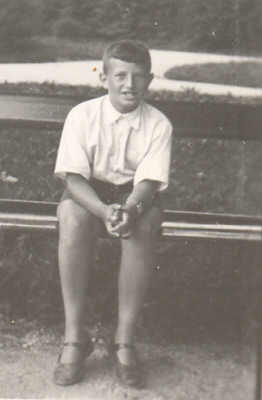
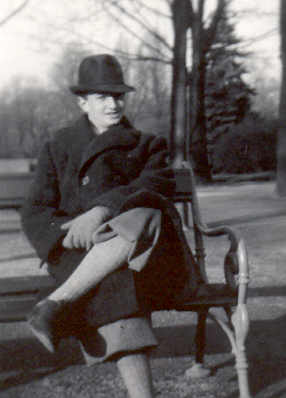
Hitler's troops marched into Austria in March of 1938 amid the cheers and jubilation of a majority of the good people of the Republic. All the proud and racially conscious Croats and Slovaks named Pospischil and Swoboda, Jelinek and Wazlaweck (Dr Kurt Waldheim's father's name was Watzlaweck) affirmed their Germanic ancestry - Jews were hounded down and their businesses vandalized and closed. They were barred from positions in industry, government, the courts and the free professions. Jewish life gradually ground to a halt. I prepared for emigration to Palestine taking training, offered by the Jewish community, in sheet metal working and agriculture. My parents had different ideas;
In the fall of 1933 I had contracted Pneumonia and spent 6 weeks in the care of the sisters in a Catholic Hospital in Salzburg. I was still recuperating when school started and went instead to the Semmering with my mother. The Semmering is a fashionable mountain resort and rather expensive in the summer but this was Off -Season and we stayed in a first-rate hotel. We took frequent walks in the mountains and on one such occasion we met a rather adventurous looking couple of tourists, she tall and lanky he a veritable John Bull with flowing white hair and side locks. They asked us for the time in a German that seemed to flow around bulk a hot potato in their mouths. I answered them in English and we formed one of those fast friendships that often form on vacations. In keeping with such an acquaintanceship we wrote each other three or four times every year. My parents, who had no illusions, about the likely fate that awaited Jews in Hitler's clutches, approached the Mertons with a plea for help. My father felt to old to emigrate and my mother would not leave her helpless parents, but they both felt it imperative that I escape and so, without telling me, they made various efforts to get me abroad. The Mertons happened to know a young lady, a Quaker, who was involved with the organization bringing children from occupied Europe to England and, so it was, that late in June of 1939, two months before the war started, I found myself on a children's transport to London.
The story of my life in England from June 1939 to October 1945 is somewhat reminiscent of the novels of Charles Dickens. The Mertons were members of the upper classes. Reginalds brother was, I believe, a hereditary member of the house of lords and his wife was the daughter of an Oxford don. Reginald had written a scholarly work about the Spanish Inquisition entitled "Cardinal Ximenes And The Rise Of Spain" He was also the first and for a long time the only, translator of Lermotov into English. They had no children. They felt some responsibility toward me. All children arriving in England were fist put into a quarantine.But after I returned to London, Reginald took me around London and into their home for several visits. He explained to me that he was a "Clergyman" and he extolled the virtues of Christianity. He also frequently made remarks such as "How odd of God to choose the Jews" and "It was decreed by Moses that Jews should have long noses". I do not know what might have been had I accepted the hint but I did not: First of all, any religion was anathema to me and, then, I am by nature introvert and act on self generated motivations. I simply ignored these remarks. In any case, the Mertons gave me a small allowance and otherwise left me to my own devices. I eventually found myself in a hostel run by a Jewish Community in London's East End. Most of the boys in the hostel hostel were working at the few trades allowed for foreigners. These included jewelry, tailoring, shoe repairing and agriculture. Many of the boys who worked as jewelers did very well for themselves: some eventually became very wealthy. I spent as much time as I could in the public library reading Ovid's poetry and Flavius Josephus's De Bellum Judaicum. Eventually I was told that my freeloading had to stop and I found myself an illegal job in a small radio factory tuning intermediate frequency circuits in heterodyne receivers. Since the hostel could not risk having an illegal worker among the boys I had to find myself a room in a small hotel near Russel Square. To pass the time I took photos of all kinds of subject in my room and the Bobby (Copper) across from my window, at the entrance to the Russel Square tube station got suspicious: It was, after all wartime and "aliens" were not allowed to have cameras. This ended my independent career and it was back into the hostels. Shortly after this incident France fell and all enemy aliens older than 16 were interned on the Isle of Man. This was a very happy time for me: The internees included the cream of the German Jewish Intelligentsia, and since they had nothing better to do, each gathered a coterie of young man about them and lectured them in the "Camp University" . I studied anything and everything: The History of French painting from Romanticism to cubism, The classical theory of numbers, The functions of a complex variable, and other esoteric subjects . My fascination with physics dated from that experience and I left the camp with deep regrets after I was released to find myself, at the tail end of the battle of Britain in a hostel for working boys run by the church of England in Brixton. Most of those boys came out of Borstal Institutions and had criminal records. I made good friends with many of them. It is not my intention here to write a book about the details of my life even tough I am confident it would make interesting reading -I was after all 17 and 18 at the time and love beckoned. I eventually found work in the Research Lab of two German professor who had various war related contracts. I worked on such new technologies as jet propulsion, variable viscosity liquids, electronic motor speed control. and so on. At the end of war I happened to work on grid controlled mercury rectifiers. But the Tommies came home, aliens were no longer needed. The Americans were hiring people from Germany, Denmark and Norway with a knowledge of German and this is how, by the way of several detours as a censor, telecom technician for wiretapping, and other neat activities I eventually came the Nuremberg War Crimes Trials as an court interpreter. There, in May of 1948, I met my future wife, Anita, who was then the Bureau Chief of the East German News agency ADN.
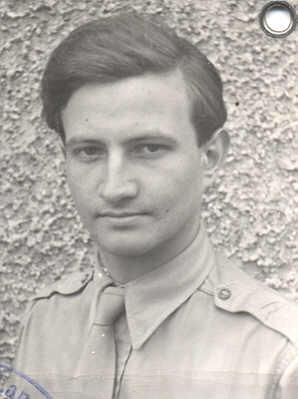
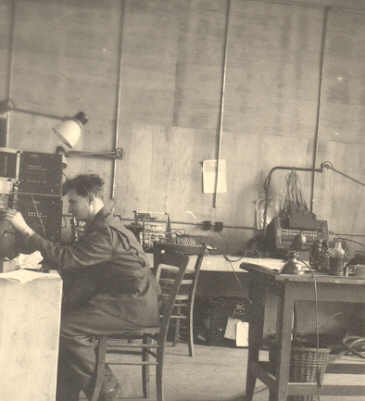
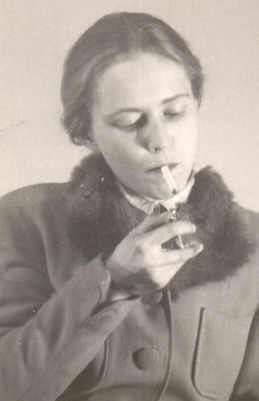
The story of our first meeting never fails to amaze our friends: I
was
a simultaneous interpreter, sitting in a glass box at the right of the
judges. To the left of me were the judges Arrayed to the left the
defendants.
Across from me were the public galleries, the first row reserved
reserved
for the press.. One of the German correspondents was a rather
inviting
looking, buxom wench. I had a friend, Bodo v Borris, among the German
journalists
and on one occasion, when he came to visit me in my glass booth during
the intermission, I charged him to get me date with that luscious
morsel
of womanhood. Since I did not know her name I just pointed. Parallax
must
have played us both a trick because, after the session he came along
with
the girl sitting next to the Walkuere of my desires. Now the girl,
Anita,
he procured for me probably weighed about 96 pounds wet and looked like
a starved church mouse. She was Bureau Chief of the East German News
Agency
ADN. I was not pleased - until I heard her speak. That evening we
decided to get married and we have been at it for 53 years at this
writing.
After our 'engagement' Anita changed allegiance and became an artist in
the US Information Office at the War Crimes Trials.
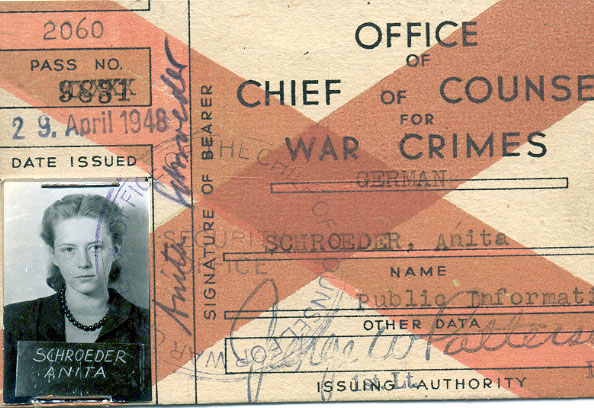
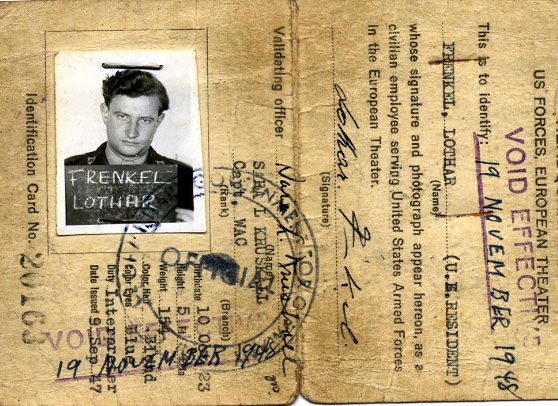
CHANGING
ALLEGIANCE
LEAVING NUREMBERG
The British allowed Anita the same status I enjoyed: British protected alien with a work permit. I returned to England and Anita followed. Both of us worked in factories. I continued my-self studies for a bachelors degree in science. Later Anita, who had also training as a technical drafts woman, worked full time in the technical design office of a cigarette factory, while I studied for several weeks full-time. I obtained a B.Sc. (general degree) in 1950 and a B.Sc Special in Physics and Mathematics in 1951. We lived in a rented room when Richard was born. He lived in a wicker basket atop of two US Army footlockers in our room. We shared a bathroom with about 12 other people. Our Landlady, Mrs. Mathieson, gave birth to a daughter, Linda, about the same time. Linda is a good friend still - We rarely loose a friend. She lived with us here, in Lynn, for a while and we have visited her many times in London.
. We emigrated to the US in October of 1951. At first Anita worked as a freelance drafts woman for a patent attorney on Broadway New York. Properly fed and dressed Anita turned out to be a strikingly beautiful woman. Madonna and Child caused quite a sensation when she went to deliver and pick up work from the Broadway office. Many a Taxi driver with procurist enterprise offered her golden opportunities in the horizontal profession. In the meantime, I worked as a salesman in Macies toy department. Very soon I found a job designing cathode ray tubes for Allen B Dumont. I helped designinged and buildimg the first 19 inch color television tube in this country. I also developed design methods for electrostatic deflection and took up the design of Cathode Ray Tubes for Stomberg Carlson and Tektronix..
When Sputnik was launched scientists suddenly were in high demand. I
joined the National Bureau of Standards (NBS) and changed to physics;.
I obtained a Ph.D. degree from Maryland U in 1964.

My apparatus for measuring rotation
spectra. A
mixer for microwaves and its application to create harmonics
(background right the Fabry Perot
chamber
between
two klystron frequencies (the harmonis are in the infrared)
The paper presented to the 1970 meeting of
URSI
(International Union of Radio Scientists
My
mixer used to measure the
and the apparatus used to measure the absolute
frequency of the H2O laser at Bell
Labs
beat
between two IF lasers
The laser is on the left, the microwave equipment
on the
right.
and a microwave signal
Warsaw
1968
Paris 1972
Sevres
Member List 1973-79
I do not know exactly who pushed the redefinition and who opposed it. The Committee's members were representing the standard bureaus of all the leading scientific nations, Germany, the UK, Japan, France, Sweden. Many of these people had invested a lifetime in the methodology of comparing the lenghts of secondary standard meter bars in terms of a certain monochromatic Calcium spectral line. They were not happy to see their live's work made irrelevant. But there was a problem with the old definition: The precision and accuracy were several orders of magnitude less than the precision and accuracy to which time could be measured. The radio astronomers were able to measure the time it took for a radio wave to go to the moon and back with greater precision than metrologists could compare lengths. In other words, the distance to the moon in terms of 'light seconds' was better known than its distance in terms of meters. Thus, by redefining the meter in terms of light-seconds, distances automatically could be measured with the same precision and accuracy as time. To use the new definition to measure terrestrial distances it was necessary to measure the frequency (waves per second passing a point) of an infrared light wave and measure the number of waves in the distance to be measured. Two things needed to be done to realise such a measurement: 1) a light wave needed to be found which was small and sharp enough to allow a precise number of wavelength to be set up in an interferometer (i.e. as standing waves between two mirrors) and 2) The frequency of that line needed to be measured. The first of these tasks was accomplished by means of stabilising a Helium-Neon Laser to the frequency of vibration in a certain mode of the methane molecule. The line was very sharp and interferometers could be set up with a precision several orders of magnitude better than comparisons of meter bars. The second of the tasks had been accomplished at the National Bureau of Standards in Boulder Colorado using the methods I had developed. I suspect that the French appointed me to the Committee because an American needed to be on the committee and I argued for the redefinition. My appointment could be justified in terms of my accomplishments. It was, in a way, a political decision. I was, however, no longer employed by NASA and since neither the Department of Transportation nor NBS nor, for that matter, The Presidential Science Advisors office or the National Science Foundation seemed to care, I essentially represented just myself on the committee or, ironically, perhaps the city of Lynn!. (See Member List 1982 above). After my return from France I spent the remainder of my civil service years modernizing the airport surface radars in the largest airports and assisting the coast guard in studies concerning their search and rescue and anti-pollution operations. That was a very pleasant activity - I went out to sea in their cruisers and made many good friends among the fine men in that service. I retired 1n 1986. Upon my insistence, Anita, who was then working as a home health aide retired too. We had a wonderful and loving 15 years traveling in. Europe, Mexico, the Western USA and New England. We were always happiest traveling, when we could devote our undivided attention to each other.
P.S. Anita died 26 November 2002. For me the clock is ticking and time is running out. I have no gray hair (almost none, anyway) I swim about a mile a day and I endeavor to write one short story every week. Some are quite good (if I say so myself) but, lets face it, the potential for significant literary merit is zero. If I look at myself in the full-length mirror after a bath before I put my glasswe back on, I fondly think I could perhaps still pass for an artists model of a male nude. But even as I get shorter the shadows are lengthening - Things are perceptibly beginning to malfunction, the handwriting is on the wall.
As I review my life, I must admit that
'peripatetic'
is indeed an appropriate term. I am always intense - even passionate -
in the pursuit of an interesting idea or experiment, until - and
usually
only until - the problem I set myself is solved. But I was not a
'committed'
individual. Not committed to any cause nor to any scientific discipline
and not committed to any degree of integrity in any of the many
arts
from ceramics to story writing and film-making that I dabbled in
.
I
abhor
religions and detest philosophy. I do not believe that ultimate answers
will ever be found by science to the questions men ask, the nature of cosciousness,
the ultimate structure and origin of the universe . I l oved Anita
intensely and her
infiniteley
many faces and moods never ceased to fascinate me. - It saved me
from
extending my peripatetic tendencies to the art of
love making but it makes my loss excruciatingly painful and left me
with a deep sense of guilt for acts done or left undone.
03/20/2002 revised 08/15/2004